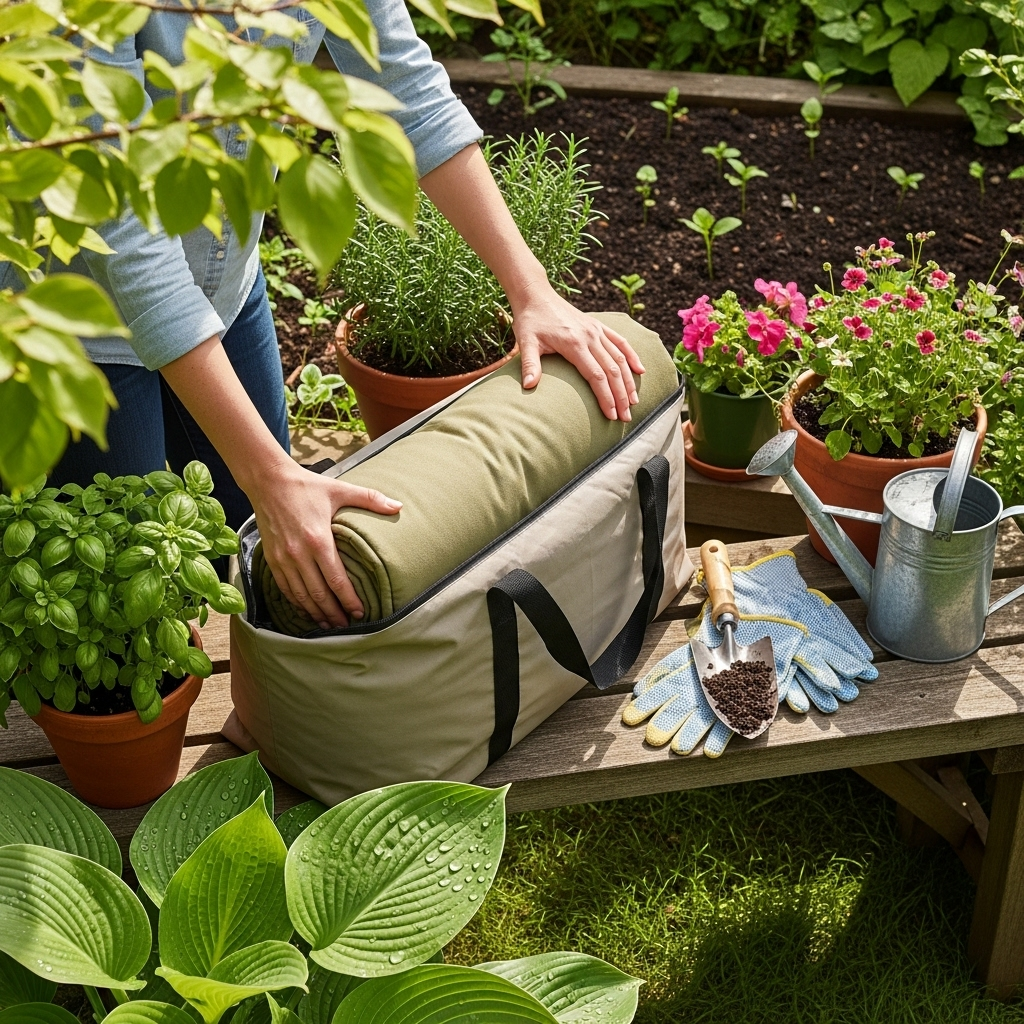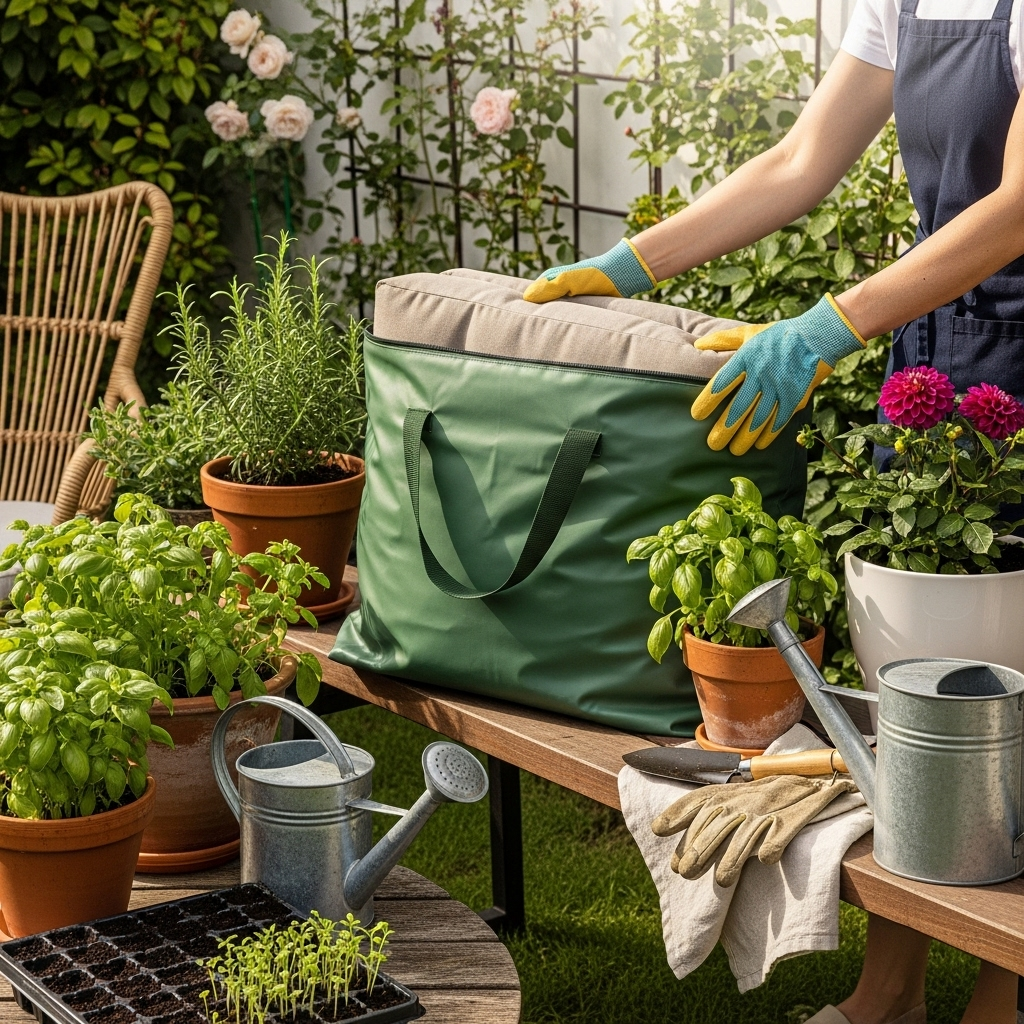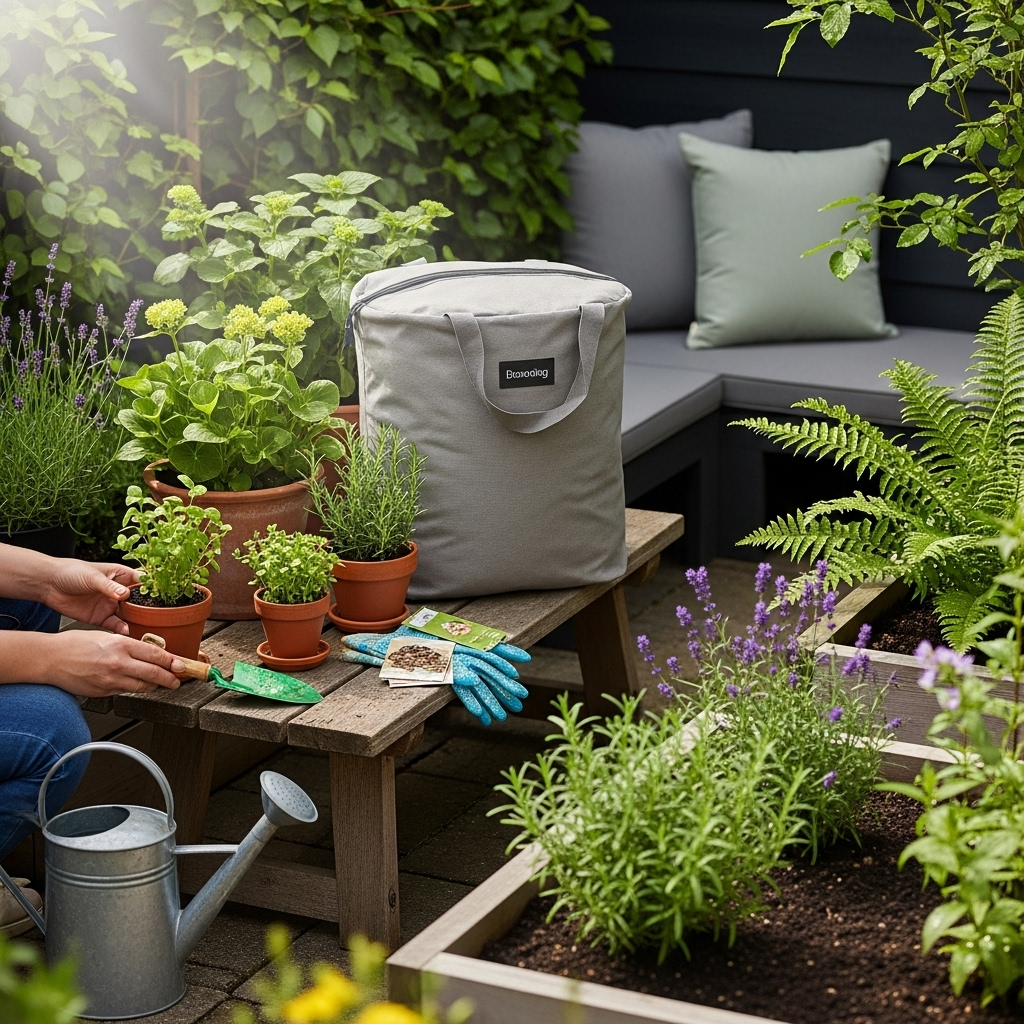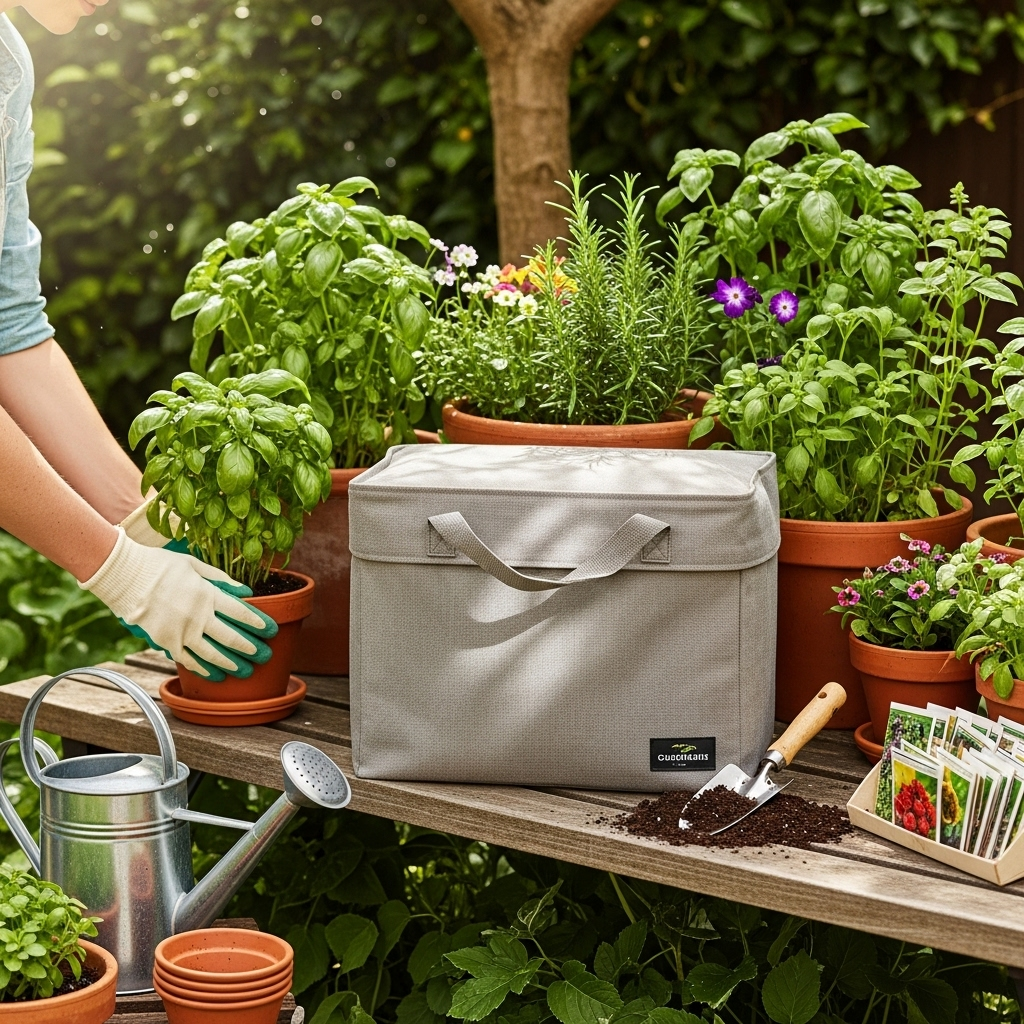To keep your outdoor cushions looking great season after season, a sturdy and weather-resistant storage bag is essential. It shields them from rain, sun, dust, and pests, extending their lifespan and saving you money. Choosing the right bag means fewer replacements and more enjoyable time relaxing outdoors.
Oh, the joy of stepping outside to your patio or garden! You’ve picked out those lovely cushions, ready to sink into comfort. But when the weather turns, or the season changes, tucking those cushions away can feel like a chore. They can get damp, dusty, or even nibbled by critters. It’s a common frustration that can leave you with faded, mildewed cushions before you know it. But don’t you worry! Protecting your outdoor cushions is simpler than you think. We’ll walk through how to find the perfect storage solution. Get ready to discover how easy it is to keep your outdoor seating cozy and inviting, year after year.
Why Your Outdoor Cushions Need a Storage Bag
Think of your outdoor cushions as little sun-worshippers and rain-lovers. They’re designed to withstand the elements, but that doesn’t mean they’re invincible! Prolonged exposure to harsh sun can fade their vibrant colors, making them look tired long before their time. Rain and humidity can seep into the fabric and foam, creating a perfect breeding ground for mold and mildew. And let’s not forget about dust, pollen, and the occasional unwelcome visitor like insects or small animals. All of these can degrade the material, shorten their lifespan, and even make them unpleasant to use.
Storing your cushions properly doesn’t just keep them looking good; it’s also a smart way to save money. Replacing outdoor cushions can be a significant expense. By investing in a good storage bag, you’re essentially giving your cushions a protective shield, allowing them to serve you comfortably for many seasons to come. It’s a small step for a big reward – longer-lasting comfort and a more beautiful outdoor space.
Key Features to Look For in a Storage Bag for Outdoor Cushions

Not all storage bags are created equal, especially when it comes to protecting outdoor items. When you’re looking for the right one, keep these important features in mind. These details make a big difference in how well your cushions are protected.
1. Material is Everything: Durability and Weather Resistance
The material your storage bag is made from is the first line of defense. You want something tough and resilient. Look for bags made from heavy-duty, water-resistant fabrics. Common materials include:
- Ripstop Polyester: This is a popular choice because it’s strong, lightweight, and designed to resist tearing. If a small rip does start, the ripstop weave helps prevent it from spreading.
- Durable Canvas (often treated): Treated canvas can offer excellent water resistance and breathability, preventing condensation buildup inside.
- PVC-coated fabrics: These are very waterproof but can sometimes be less breathable, which might trap moisture if not managed carefully.
The key is to find a material that can stand up to sun, rain, snow, and wind without breaking down. Check for mentions of UV protection in the fabric, as this will prevent the bag itself from degrading in the sun.
2. Size Matters: Ensuring a Snug (But Not Too Snug) Fit
Measuring your cushions before you buy a storage bag is crucial. You want a bag that’s large enough to hold your cushions comfortably without being overly baggy. Too much empty space can allow air and moisture to circulate, which isn’t ideal. On the other hand, trying to stuff cushions into a bag that’s too small can stress the seams and make the bag difficult to close.
Consider:
- Individual Bag vs. Large Storage Bag: Will you store each cushion separately, or do you have a large sectional whose cushions could fit into one or two big bags?
- Shape of Cushions: Are they standard seat and back cushions? Or do you have large, thick lounge chair cushions?
- Stacking Ability: If you plan to stack multiple cushions in one bag, ensure the bag is designed to handle that weight and shape.
A good rule of thumb is to measure the width, depth, and thickness of your cushions and add a few extra inches for ease of storage. Many product descriptions will provide dimensions, so compare those carefully.
3. Zipper Quality: The Weak Link to Watch Out For
A storage bag is only as good as its closure. Look for heavy-duty zippers that are resistant to rust and corrosion, especially if they’ll be exposed to outdoor elements even briefly. Zippers are often a point of failure, so:
- Check for large, robust zipper pulls that are easy to grip, even with gloves on.
- Look for zippers with fabric flaps that cover them when closed. This adds an extra layer of protection against water seeping in.
- Consider bags with secure closures like velcro or drawstring systems if zippers are a concern, though zippers generally offer a tighter seal.
4. Ventilation: Preventing the “Sweaty Cushion” Syndrome
This might sound counterintuitive – you want to keep water out, so why would you want ventilation? The trick is breathable but water-resistant. If a bag is completely sealed and traps moisture inside (from the cushion itself or residual dampness), it can lead to mold and mildew growth just as easily as rain. Look for bags that offer some form of ventilation, often through hidden vents or breathable fabric construction. This allows for air circulation, preventing that dreaded “sweaty cushion” effect.
5. Handles and Straps: For Easy Moving and Storage
Outdoor cushions, especially when grouped, can be heavy. Well-placed, reinforced handles make moving them from your outdoor furniture to their storage spot much easier. Some bags also come with straps for securing them, which is great for stacking or if you need to tie them down to prevent them from blowing away.
6. UV Protection
While you want to protect your cushions from the sun, you also want the storage bag itself to withstand sun exposure. Bags made with UV-resistant materials will last longer and won’t become brittle or crack after prolonged time outdoors, even if they are just sitting on the patio waiting to be used.
Types of Storage Bags for Outdoor Cushions
When you’re on the hunt for the perfect storage solution, you’ll find there are a few different types of bags designed for outdoor cushions. Each has its own advantages, depending on how many cushions you have and where you plan to store them.
1. Large, Rectangular Storage Bags
These are the most common type. They’re essentially big sacks designed to hold multiple cushions from a sofa, chairs, or chaise lounges. They often have zip closures and sometimes reinforced handles for easier carrying.
- Pros: Great for consolidating many cushions into one easy-to-manage bundle. Can offer substantial protection for a variety of cushion sizes.
- Cons: Can be quite large and bulky, potentially taking up a lot of space in a garage or shed. Might be heavy to move when full.
2. Individual Cushion Covers
These are smaller bags designed to protect a single cushion. They often have drawstring closures or zippers.
- Pros: Offer tailored protection for each cushion. Easier to handle and store individually. Prevent moisture from seeping between stacked cushions.
- Cons: Requires more individual effort to bag each cushion. More small items to keep track of.
3. Storage Bins and Chests (with protective covers)
While not strictly “bags,” dedicated outdoor storage furniture like benches or chests are a popular solution. If you opt for this, it’s still a great idea to use a smaller storage bag or wrap individual cushions within the bin to protect them from dust and any residual moisture that might develop.
- Pros: Can also serve as extra seating or a side table. Provides a rigid structure for protection.
- Cons: More expensive upfront. Can be heavy and difficult to move. May not be fully waterproof on its own, requiring additional protection for cushions inside.
4. Vacuum Seal Bags (for indoor storage during off-season)
If you have the space and are storing cushions indoors during the coldest parts of the year, vacuum seal bags can be a game-changer for space-saving. They significantly reduce the volume of bulky cushions.
- Pros: Excellent for compact storage, saving a lot of space. Protects from dust and moisture effectively when stored indoors.
- Cons: Not suitable for outdoor storage due to permeability to air and moisture. Requires a vacuum cleaner to use. Can be expensive for large quantities.
How to Choose the Right Storage Bag: A Quick Guide

To make your decision easier, here’s a simple way to narrow down your options:
Step 1: Assess Your Cushions
- How many cushions do you have?
- What are their approximate dimensions (length, width, thickness)?
- Are they all similar in size and shape, or do you have a mix?
Step 2: Determine Your Storage Location
- Will they be stored outdoors (under a patio overhang, in a shed, on a deck)?
- Will they be stored indoors (garage, basement, closet)?
- Is your storage area prone to dampness, extreme temperatures, or pests?
Step 3: Prioritize Features
- What’s most important? Durability? Water resistance? Ease of carrying? Space-saving (for indoor storage)?
Step 4: Compare Bag Types and Materials
- For multiple cushions stored outdoors: A large, heavy-duty, water-resistant bag is often best.
- For convenience and individual protection: Consider individual covers.
- For maximum space-saving indoors: Vacuum seal bags are a great option.
- For a blend of protection and outdoor furniture needs: A storage bin might work, but ensure extra cushion protection.
DIY Outdoor Cushion Storage Bag Options
Are you a DIY enthusiast who likes to get crafty? Creating your own storage bag for outdoor cushions can be a rewarding project! Plus, you can customize it to your exact needs and potentially save some money. Here’s a simple idea:
Simple Pillow Cover Style Bag
This method is great for creating a storage bag that resembles a large pillowcase, perfect for individual cushions or a few smaller stacked ones.
Materials You’ll Need:
- Heavy-duty, water-resistant outdoor fabric: Look for fabrics sold for outdoor furniture, awnings, or marine use. You can often find these at fabric or craft stores. Aim for something at least 600-denier polyester or similar. Check out resources like FabricShoppe’s durability guide for fabric comparisons.
- Heavy-duty thread: Upholstery thread or outdoor-rated polyester thread is best.
- Sewing machine: A robust machine capable of handling thick fabric.
- Measuring tape
- Fabric scissors
- Pins
- Optional: Velcro strips or a heavy-duty zipper (ensure it’s rust-proof or coated for outdoor use)
- Optional: Webbing or sturdy straps for handles
Steps to Create Your DIY Bag:
- Measure Your Cushions: Lay your cushions flat and measure their width, depth, and height. If storing multiple, measure the stacked dimensions. Add about 1-2 inches to each dimension for ease of fit.
- Cut Your Fabric: You’ll need two main pieces for the front and back of the bag, and strips for the sides.
- Front & Back Panels: Cut two pieces of fabric to your desired finished size (e.g., if your cushion is 20x20x5 inches, you might cut pieces 22×22 inches).
- Side Strips: Calculate the total perimeter of your cushion stack (width + depth + width + depth). Then, add your desired bag height plus seam allowances. For example, for a 20x20x5 cushion, the perimeter is 80 inches. If you want the bag to be 10 inches high, you’d cut a strip roughly 80 inches long by 12 inches wide (10 inches height + 1 inch top hem + 1 inch bottom hem allowance).
- Sew the Sides: With right sides facing inward, sew the side strips together to form a continuous loop. Then, sew this loop to the edge of one of the main panels, also with right sides facing inward.
- Prepare the Opening: Decide where you want your opening. It’s often easiest to have an opening along one of the longer sides. Hem the edges of this opening securely. If using a zipper, attach it now to the hemmed edges. If using Velcro, attach one set of strips to the inside of the hem and the other to the outside of the overlapping flap that will close it.
- Attach the Back Panel: With right sides facing inward, pin and sew the remaining main panel to the open edges of the side panel loop, leaving the opening you prepared unsewn.
- Add Handles (Optional): Cut lengths of webbing for handles. Fold the raw edges under and stitch them securely onto the outside of the bag, reinforcing them well with multiple rows of stitching.
- Turn and Finish: Turn the bag right side out. Create a secure closure for the opening (zip, Velcro, or even a tight fold-over flap secured with straps).
A well-made DIY bag can be just as effective as a store-bought one, and you’ll have the satisfaction of knowing you made it yourself!
Proper Storage Practices: Beyond Just the Bag

Putting your cushions in a bag is a fantastic start, but a few extra steps can ensure they stay in tip-top shape, ready for your next outdoor gathering.
1. Ensure Cushions are Dry
This is perhaps the most critical step. Never store damp cushions. Even in a water-resistant bag, moisture trapped inside can lead to mold and mildew. If your cushions have been caught in a light shower, let them air dry thoroughly in the sun before bagging them. For a deep clean, consider washing removable covers according to manufacturer instructions and air-drying them completely.
2. Clean Them Before Storage
Dirt, pollen, bird droppings, and food spills can attract pests and can also degrade the fabric over time. Give your cushions a light brushing or wipe-down to remove surface debris. For tougher stains, spot-clean them according to the fabric care instructions. A clean cushion is less appealing to insects and less likely to harbor mold.
3. Choose a Suitable Storage Location
Even the best outdoor cushion bag can’t work miracles in a terrible storage environment. Ideally:
- Indoors is best: A garage, shed, or basement that is dry and pest-free is ideal.
- Elevate off the floor: If storing in a potentially damp area, place bags on shelves or pallets to keep them off the floor.
- Avoid extreme temperatures: While outdoor cushion fabric is designed for weather, constant exposure to scorching heat or freezing cold can shorten its lifespan.
- Keep them out of direct sunlight: Even in storage, prolonged UV exposure can fade or weaken materials.
4. Don’t Overstuff
As mentioned earlier, forcing too many cushions into one bag can strain seams, make it difficult to seal properly, and create unnecessary stress on the fabric. If a bag is bulging excessively, it’s likely too full and offers less effective protection.
5. Consider Pest Deterrents
If pests are a concern in your storage area, you can place natural deterrents like cedar chips or diatomaceous earth (food grade) in the vicinity of your stored cushions, but not directly touching them if possible, to discourage insects and rodents.
By following these simple practices, you’re significantly increasing the chances of your cushions emerging from storage looking and feeling as good as new.
Comparing Storage Bag Options: A Table
To help you visualize the differences between common storage bag types, here’s a quick comparison:
| Feature/Bag Type | Large Rectangular Bag | Individual Cushion Covers | DIY Zipper Bag | Vacuum Seal Bag (Indoor Only) |
|---|---|---|---|---|
| Best For | Multiple cushions from a set (sofa, chairs) | Individual cushions, mixed sizes | Custom sizes, specific needs, crafty individuals | Maximizing space for winter storage indoors |
| Protection Level | High (if heavy-duty material) | High (tailored fit) | Can be very high (with good materials) | Very High (against dust/moisture when stored indoors) |
| Ease of Use | Consolidates items, but can be bulky | More steps, but easier to handle individually | Depends on design complexity | Requires vacuum; very space-efficient |
| Durability | Varies by material and brand | Varies; look for reinforced closures | Depends on fabric quality and construction | Good, but not intended for outdoor exposure |
| Cost | Mid-range | Low to Mid-range | Potentially lower, depending on material cost | Mid to High-range (for good quality bags) |
| Water Resistance | Key feature to look for | Key feature to look for | Key feature to look for | Not its primary function (protects from indoor dust/moisture only) |
Where to Find Quality Storage Bags
You can find excellent storage bags for your outdoor cushions at a variety of retailers:
- Home Improvement Stores: Often carry a range of durable, weather-resistant options.
- Online Retailers: Websites like Amazon, Wayfair, and Overstock offer a vast selection with many customer reviews to help guide your purchase.
The EPA provides great tips on choosing reusable bags, and many of these principles apply to choosing durable storage options. - Specialty Outdoor Furniture Stores: May have higher-end, more specialized bags.
- Fabric Stores: If you’re going the DIY route, this is your go-to for raw materials.
When shopping online, always read recent customer reviews focusing on durability, water resistance, and ease of use. Pay close attention to the provided dimensions to ensure a good fit.
Frequently Asked Questions About Outdoor Cushion Storage Bags

Here are some common questions beginner gardeners and homeowners ask:
Q1: How do I know what size storage bag to buy?
A: Measure your cushions! Measure the width, depth, and thickness of each cushion you intend to store. For multi-cushion bags, measure the dimensions once they are stacked together as you would store them. Add a few inches to these measurements for a comfortable fit that won’t strain the bag’s seams.
Q2: Can I just use any old plastic tarp or garbage bag?
A: While a temporary cover might offer minimal protection, standard plastic tarps and garbage bags are generally not designed for long-term cushion storage. They can trap moisture, become brittle in the sun, and are easily torn, offering little protection against the elements or pests.
Q3: My storage bag feels damp inside even though it rained. What’s wrong?
A: This can happen if the cushions themselves weren’t completely dry before storage, or if there was condensation trapped inside. Make sure cushions are bone dry and consider bags with some ventilation. If it persists, try airing out the cushions and the bag on a dry, sunny day.
Q4: How long should a good quality outdoor cushion storage bag last?
A: With proper care and storage, a good quality, heavy-duty storage bag should last anywhere from 3 to 7 years, sometimes even longer. Factors like material quality, UV exposure, and how frequently it’s handled will affect its lifespan.
Q5: Should I store my cushions indoors or outdoors?
A: Indoors is always preferable for maximum protection, especially during harsh weather. If you must store them outdoors, ensure they are in a sheltered location (like under an overhang or a sturdy deck box) and that your storage bag is highly water-resistant and UV-protected.
Q6: Can I wash the storage bag itself?
A: Many outdoor storage bags can be spot-cleaned with mild soap and water. For a more thorough cleaning, check the manufacturer’s instructions, as some might be machine washable in cool water on a gentle cycle. Always air dry them completely before putting them back into service.
Conclusion
Taking care of your outdoor furniture cushions is a simple yet effective way to ensure they remain comfortable, attractive, and functional for years to come. By investing in a durable, weather-resistant storage bag and following a few key practices – like ensuring cushions are dry and clean before storage – you’re protecting your investment and saving yourself the cost and hassle of frequent replacements. Whether you choose a large consolidated bag, individual covers, or even embark on a DIY project, the goal is the same: to safeguard your cushions from the elements, pests, and dust.
Think of your storage bag not just as a cover, but as a guardian for your outdoor comfort. It’s a small step that leads to bigger rewards: preserving the beauty and integrity of your cushions, making your patio or garden an inviting retreat season after season. So, measure up, choose wisely, and enjoy the peace of mind that comes with knowing your soft furnishings are well-protected. Happy gardening and happy relaxing!



